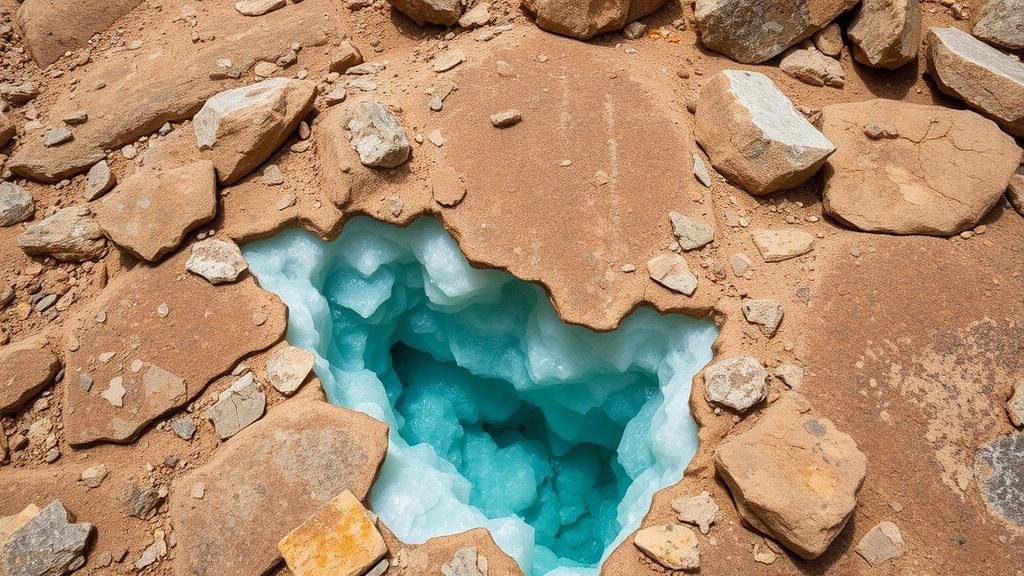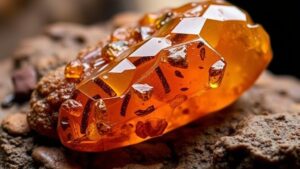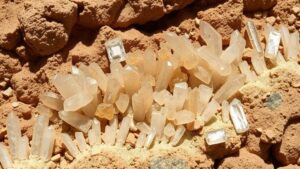Exploring Colorado’s rugged terrain for aquamarine veins embedded in mountain rock.
Exploring Colorado’s Rugged Terrain for Aquamarine Veins
Colorado, known for its breathtaking landscapes and diverse geology, is a treasure trove for rockhounds and mineral collectors. Among its many geological wonders, aquamarine, a precious beryl variant, captivates enthusiasts with its striking blue-green hues. This article delves into the exploration of Colorado’s rugged terrain in search of aquamarine veins embedded in mountain rock.
The Geological Background of Aquamarine
Aquamarines chemical composition is primarily beryllium aluminum cyclosilicate, with a hardness of 7.5 to 8 on the Mohs scale, making it suitable for jewelry and collection. Occurring in hydrothermal veins, aquamarine forms in granitic pegmatites, which are coarse-grained igneous rocks rich in large crystals. It is within these pegmatites, often found in the Rocky Mountains, where mineral collectors can find this stunning gem.
Some key properties of aquamarine include:
- Color: Ranges from pale blue to deep blue-green
- Transparency: Typically transparent to translucent
- Crystal System: Hexagonal
Prime Locations for Aquamarine Hunting
Colorados mineral-rich locales present excellent opportunities for collectors. Notably, several areas stand out for their significant aquamarine deposits:
- Mount Antero: This area, located in the Sawatch Range, is renowned for its aquamarine crystals. altitude and rugged terrain yield unique specimens embedded in quartz and other minerals.
- Sweet Home Mine: Situated near Alma, this mine is famous for producing high-quality aquamarine gems, some over 1 inch in diameter.
- Quartzite Mountain: This less-traveled area is a hidden gem known for its rich aquamarine-bearing pegmatites.
Tools and Techniques for Collecting
For successful mineral hunting, proper equipment and techniques are essential. Below are some recommendations for collectors:
- Tools: A rock pick, chisel, sturdy gloves, and safety goggles are must-haves for breaking rock and protecting yourself during excavation.
- Geological Maps: Use geological maps to identify pegmatite locations known to contain aquamarine. USGS maps can be particularly useful.
- Field Guides: Bring along field guides to help identify various minerals and ensure correct identification of specimens.
Legal Considerations and Ethical Collecting
Before embarking on your aquamarine-hunting adventure, it is crucial to understand the legalities associated with mineral collecting. Here are some considerations:
- Permits: Some areas may require permits for collecting minerals. Check with the Bureau of Land Management or local authorities.
- Respect Private Property: Always obtain permission to collect on private lands to avoid trespassing issues.
- Extraction Ethics: Practice responsible collecting by minimizing your ecological footprint; fill any holes you dig and avoid overharvesting.
Real-World Applications of Aquamarine
Aquamarine is not only a coveted gemstone but also has several applications. Also to its use in fine jewelry, aquamarine is believed to possess healing properties and is commonly associated with enhanced communication and emotional clarity. This gem is also utilized in various decorative arts and can serve as a significant investment, given that high-quality stones can fetch prices from several hundred to several thousand dollars per carat, depending on clarity, color, and size.
Actionable Takeaways
Exploring Colorado’s rugged terrain for aquamarine veins offers a thrilling prospect for rockhounds and mineral collectors alike. To make the most of your experience:
- Research specific locations and their geological formations.
- Equip yourself with the proper tools and information.
- Always abide by legal regulations and ethical practices regarding mineral collection.
By following these guidelines, you will not only enhance your chances of discovering stunning aquamarine specimens but also contribute positively to the preservation of Colorados remarkable natural heritage.



